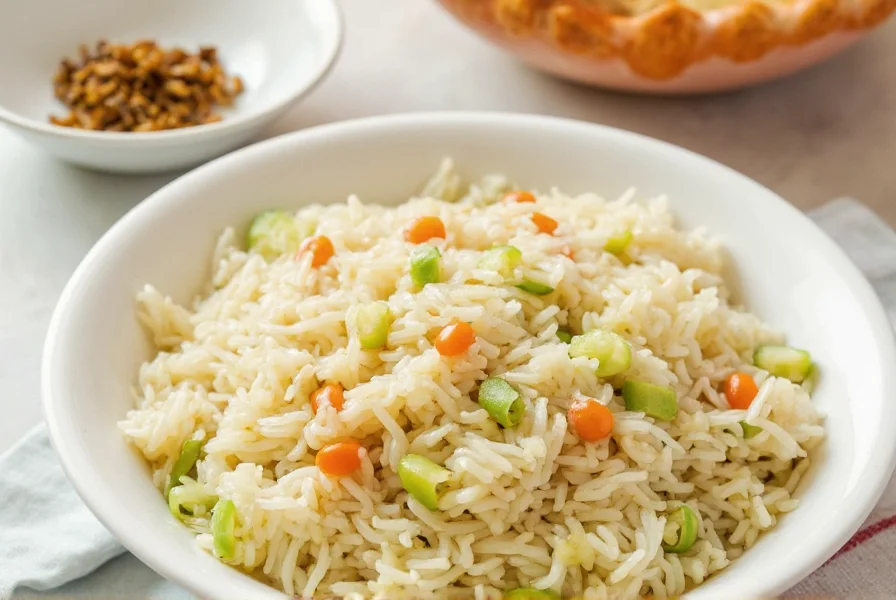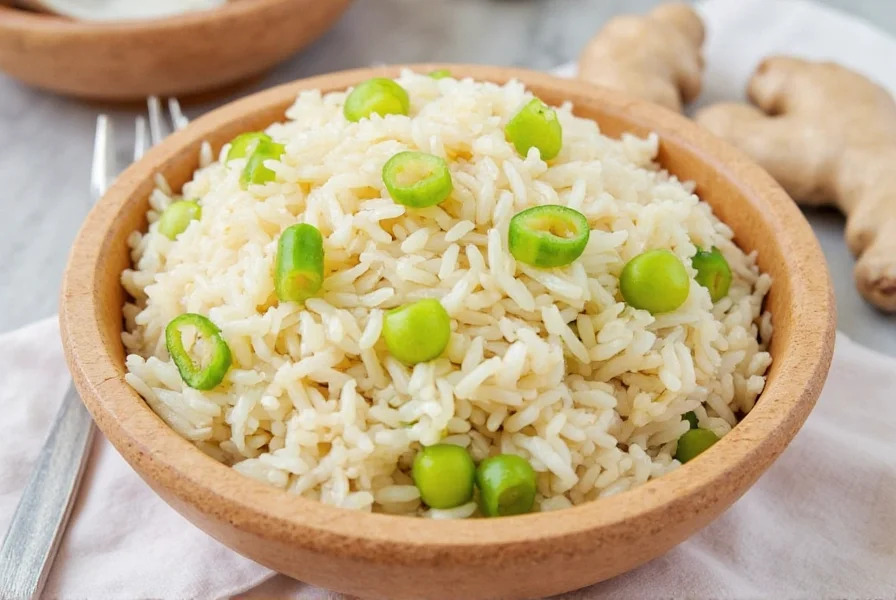Creating exceptional ginger rice transforms a simple side dish into a culinary highlight. This versatile preparation enhances everything from stir-fries to sushi, providing that distinctive aromatic warmth that defines many Asian cuisines. Unlike store-bought versions that often contain artificial flavors, homemade ginger rice delivers authentic, nuanced flavor through careful ingredient selection and proper technique.
The Essential Components of Perfect Ginger Rice
Authentic ginger rice relies on three critical elements: quality rice, fresh ginger, and precise water ratio. While many recipes exist, the foundation remains consistent across culinary traditions from Japanese shoga gohan to Chinese ginger fried rice preparations.
| Ingredient | Recommended Amount | Key Purpose |
|---|---|---|
| Short-grain rice | 1 cup (200g) | Creates ideal sticky texture |
| Fresh ginger | 1-2 tablespoons grated | Provides authentic aromatic flavor |
| Water | 1¼ cups (300ml) | Ensures proper absorption |
| Salt | ½ teaspoon | Enhances overall flavor profile |
Step-by-Step Ginger Rice Preparation
Follow these professional techniques to achieve restaurant-quality ginger rice at home:
- Rinse thoroughly: Wash rice under cold water until water runs clear (3-4 rinses). This removes excess starch preventing gummy texture.
- Prepare ginger: Finely grate fresh ginger (never use powdered for authentic flavor). For milder taste, squeeze liquid from grated ginger.
- Combine ingredients: Add rinsed rice, water, grated ginger, and salt to rice cooker or heavy-bottomed pot.
- Cook properly: For rice cooker, use standard setting. For stovetop, bring to boil, reduce heat to lowest setting, cover tightly, and cook 15 minutes.
- Rest crucially: Let rice sit covered off heat for 10 minutes after cooking. This allows steam to distribute evenly for perfect texture.
- Fluff gently: Use rice paddle or fork to separate grains without crushing them.

Avoiding Common Ginger Rice Mistakes
Even experienced cooks encounter issues with ginger rice preparation. Understanding these pitfalls ensures consistent results:
- Using old or low-quality rice: Fresh short-grain rice (like Calrose or Koshihikari) yields superior texture. Store rice in airtight container away from light.
- Incorrect water ratio: Too much water creates mushy rice; too little produces undercooked grains. Adjust slightly based on your specific rice variety.
- Disturbing during cooking: Resist the urge to check or stir rice while cooking. This interrupts the steaming process essential for proper texture.
- Skipping the resting period: The 10-minute rest after cooking allows moisture to redistribute evenly throughout the rice.
Regional Variations and Creative Adaptations
Ginger rice appears in numerous culinary traditions with distinctive regional interpretations:
- Japanese style: Often includes a strip of kombu (dried kelp) for umami depth, served with grilled fish or as sushi rice alternative
- Chinese variation: Typically incorporates scallions and sesame oil after cooking, served alongside stir-fries
- Korean adaptation: Sometimes includes jujube dates for subtle sweetness, accompanying bibimbap or grilled meats
- Sushi application: Slightly vinegared ginger rice creates distinctive sushi rolls with aromatic complexity
Perfect Pairings for Ginger Rice
This versatile side dish complements numerous main courses:
- Asian braised dishes like red-cooked pork or soy-braised tofu
- Grilled or steamed fish (especially salmon or black cod)
- Vegetable stir-fries with mushrooms and bok choy
- Egg dishes such as tamagoyaki (Japanese rolled omelet)
- Simple preparations like miso soup and pickled vegetables
Storage and Reheating Techniques
Proper storage maintains ginger rice quality for future meals:
- Cool completely before storing in airtight container
- Refrigerate for up to 4 days or freeze for 2 months
- Reheat with 1-2 teaspoons water per cup of rice, covered, on low heat
- Microwave method: Cover with damp paper towel, heat in 30-second intervals
- Never reheat multiple times as this degrades texture significantly
Frequently Asked Questions
Can I use ground ginger instead of fresh in ginger rice?
While fresh ginger provides superior flavor and aroma, you can substitute ground ginger in a pinch. Use ¼ teaspoon ground ginger per tablespoon of fresh ginger required. However, the flavor profile will be noticeably different and less vibrant than when using freshly grated ginger.
Why does my ginger rice turn out mushy?
Mushy ginger rice typically results from excessive water, insufficient rinsing, or disturbing the rice during cooking. Ensure you rinse rice until water runs clear, maintain the proper 1:1.25 rice-to-water ratio, and avoid opening the lid during the cooking process. Different rice varieties may require slight water adjustments.
How can I enhance the ginger flavor without making it too strong?
For balanced ginger flavor, grate the ginger finely and consider squeezing out some of the liquid before adding to rice. You can also infuse the cooking water with ginger slices (removed before serving) for more subtle flavor. Adding a small piece of kombu seaweed during cooking enhances umami without overpowering the ginger notes.
Is ginger rice suitable for sushi preparation?
Yes, ginger rice works beautifully for certain sushi preparations. For sushi, add 1-2 tablespoons rice vinegar and 1 teaspoon sugar to the cooked rice while it's still warm. The ginger adds a distinctive aromatic dimension to sushi rolls, particularly complementing seafood and vegetable combinations.











 浙公网安备
33010002000092号
浙公网安备
33010002000092号 浙B2-20120091-4
浙B2-20120091-4